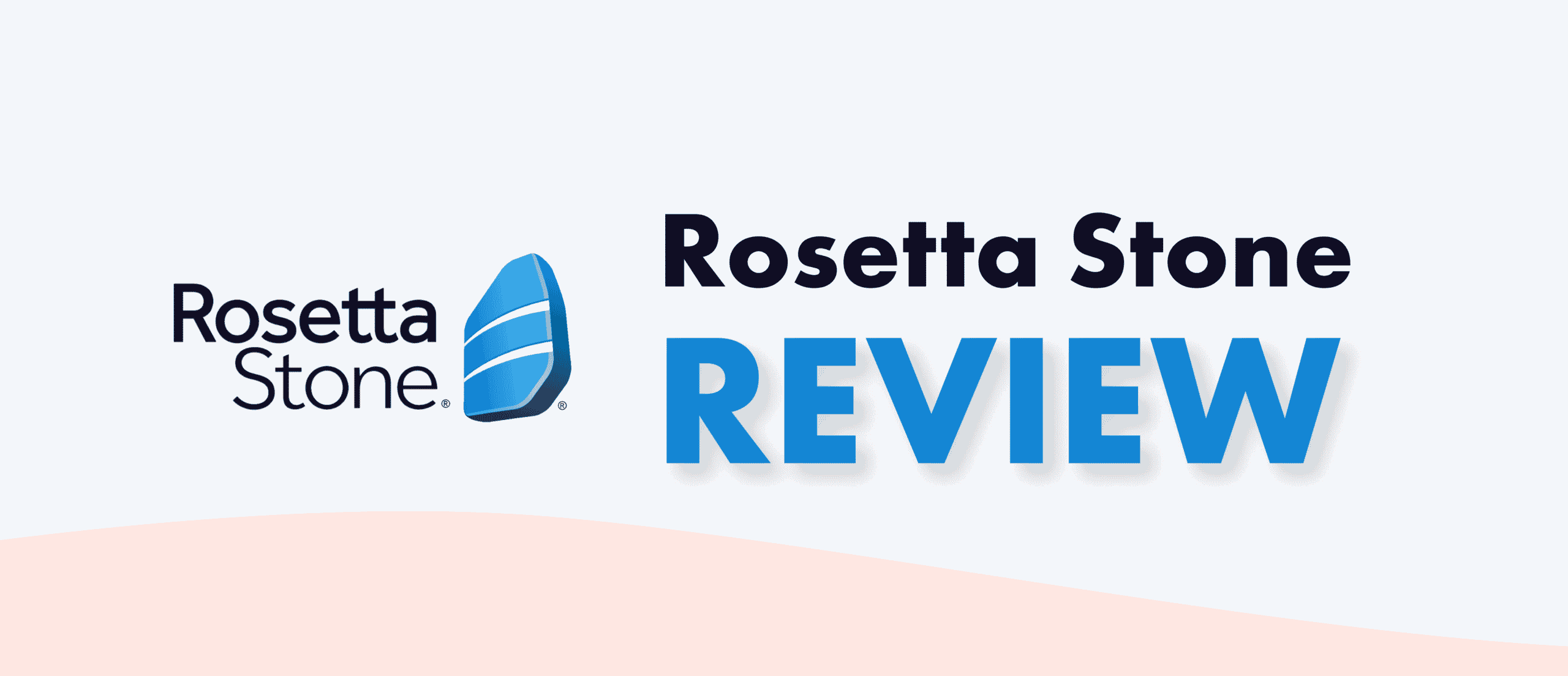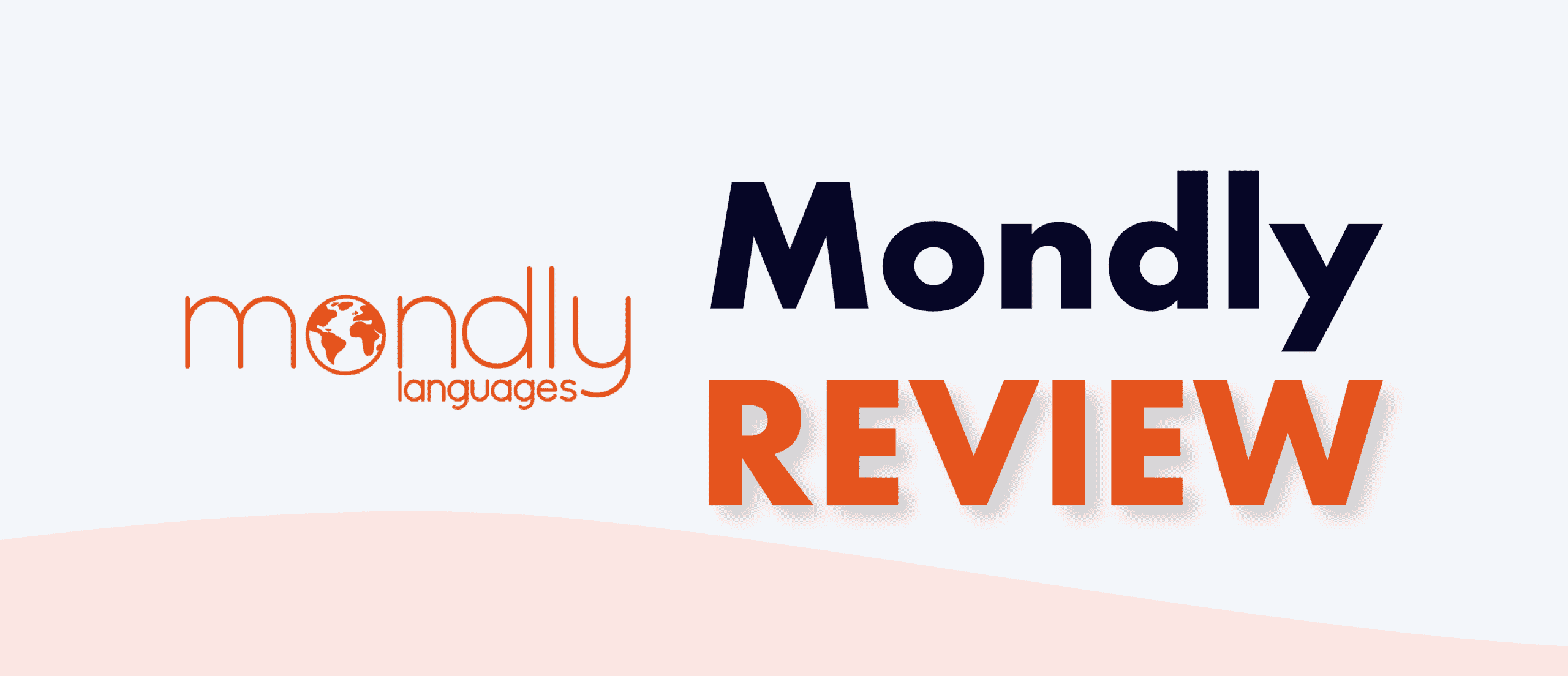Rosetta Stone Review: A Complete Guide (for 2023)
Updated: 02. Mar, 2023
When learning a new language, you want to be able to do so as fast as possible. You want to immerse yourself in it, not just study it, but also speak it as a native would.
Yet, learning a language isn’t always a smooth ride. Sometimes you get bored. Other times you get confused. But thanks to Rosetta Stone, learning a new language can be easy, fun, and enlightening.
How does Rosetta work? Does it have what it takes to help you achieve your unique learning goals? Is it worth it?
This article will help you find out the answers to these questions. It’s a complete review of everything you need to know before using the Rosetta Stone app. It examines its features and perks and answers your most frequently asked questions. So, by the time you are done with this article, you’ll be adequately informed to make your best decision.
Let’s dig in.
What Is Rosetta Stone?
Rosetta Stone is a language learning app that helps users learn new languages effectively by providing excellent language learning support. This includes a mix of technology-based learning tools and native-speaking language experts to walk learners through the process.
By creating a fun and flexible structure, Rosetta Stone makes learning less tedious and time-consuming. With this system, users find learning new languages seamless and almost effortless. Learning can take as little as five to ten minutes of their day, so it doesn’t eat into their schedule, enabling them to learn their terms.

As a flexible language learning app, it syncs across several devices. So, while you can start learning from your Desktop, you can continue on your phone on your way home.
Rosetta Stone offers several languages, including French, German, Italian, English, Japanese, etc. Beside allowing you to explore different language opportunities, it provides the resources you need to immerse yourself in a language while learning thoroughly. As a result, you will learn faster and better, allowing you to be an expert in a chosen language in less time. This explains why it’s among the most sought-after language learning tools, with a 4.7 rating on the app store.
Is Rosetta Stone a Free App?
Rosetta Stone offers a free 3-day trial for those who want to check out the software to decide if it’s what they want. However, after the 3-day trial, you must opt for the membership plan if you wish to continue using the app. Various pricing plans are available on Rosetta Stone. They include:
Rosetta Stone Price Subscriptions
- 3-month membership –$11.99/month, $35.97
- 12-month membership –$7.99/month. $95.88 total
- Lifetime unlimited–$179 one-time fee
Note that while the 3 and 12-month memberships are for specific languages, the lifetime unlimited membership gives users access to all the languages. The Rosetta lifetime unlimited plan is available for as long as it is supported. However, users must pay a complete, upfront payment before accessing the benefits.
How Does Rosetta Stone Work?
Rosetta Stone adapts a dynamic immersion approach to immerse users in the language of their choice. This method helps you learn everyday conversations to use them in real-life situations. So, rather than learning random words, it specifically provides common words and images you can use to navigate everyday situations, whether you are new in a city or just learning from where you are. This allows you to learn naturally and progress faster because you practice sentences you can relate to and words you use daily.
Rosetta Stone also uses TruAccent technology to enable users to hear how native speakers pronounce words. Also, you can pronounce words and compare your voice to native speakers. Afterward, you will receive instant feedback to track your performance.

Grammar lessons on Rosetta Stone cover grammatical tenses and mood. It supplies different examples of grammatical concepts and highlights areas you need to focus on. After this, you will be given a sentence with multiple answers to choose the best option. The program informs you immediately if you are wrong or right, and you can choose if a sound should be played when you click an answer through the preference screen.
Review and milestone lessons are created as tests. You score points every time you click on an answer. After studying, the program shows your total number of wrong answers. It also shows you the percentage of correct answers. However, if you answer many questions incorrectly, the program suggests you retry the lesson.
The first step to getting started on Rosetta Stone is to sign up on the app following these steps:
- Download the app from PlayStore or AppStore
- Register
- Click “start” to begin your five-minute questionnaire to state your language goals
- Take a placement test to choose a level that works best for you
- Click on “Start Learning” to start the new product
- Start learning

Learning on Rosetta Stone can be as flexible as you want it to be. The program lets you learn your way. So, if you operate on a busy schedule, you can select a five or ten minutes lesson daily to learn a language at home, in your office, or on the go.
What Languages Can You Learn on Rosetta Stone?
You can learn 25 languages on Rosetta Stone. It doesn’t restrict you to learning one language; you can learn more than one language. However, many people who want to learn more than one language are often bothered about its cost and commitment. The good news is that Rosetta Stone is a flexible app so learning more than one language is less of a hassle. So, with the right program and schedule, studying multiple languages of your choice is less overwhelming.
The languages you can learn on Rosetta Stone include: Spanish, French, Arabic, Korean, Dutch, Persian, British English, American English, Polish or Italian. Filipino, Portuguese, German, Greek, Russian, Hebrew, Spanish, Hebrew, Hindi, and Irish are also languages you can learn on the app. Lastly, you can learn Swedish, Japanese, Turkish, and Aprende Ingles.
If you are unsure of the right language to speak, check what language (s) piques your interest or fascinates you. You may also consider the countries you plan to visit in the future and the languages they speak. Being able to speak foreign languages opens doors to opportunities and adventures. So, you want to be sure you are ready to harness the chance when it comes.
However, the first step is selecting a new language to learn. It could range from French to Chinese, Spanish, or Japanese. No matter what it is, selecting a language you are interested in is important.
Typically, it takes about 50 hours to learn a new language on Rosetta Stone. Depending on your schedule, you can spread these hours by setting aside specific minutes to study your new language daily. For example, if you dedicate 30 minutes daily to a lesson, you can complete a task in 20 weeks. You can devote more minutes to learning daily if you prefer to learn faster.
Rosetta Stone Learning Structure
Rosetta Stone offers a systematic approach to learning. It tests users’ proficiency level from the get-go to determine what level they fall on the Common European Framework of Reference (CEFR) scale. The CEFR scale uses a 6-point grading system, including A1 for beginners to C2 for learners who have an average understanding and proficiency level. Essentially, the levels are divided into basic learners, elementary learners, and proficient learners.
Lessons are structured to meet learners at their language proficiency level. Depending on your proficiency level, there are 12 to 20 units of content. Every unit highlights different levels of language and proficiency skills. Lessons are about 30 to 60 minutes long. Each class engages students with a text lesson, discussion questions, a quiz, and hands-on class exercises to help users understand the language they learn.

The Rosetta Stone learning structure enables learners to move from beginner or elementary proficiency stages into the B1 level of proficiency on the CEFR scale. At these levels, they would have adopted the skills necessary to learn at higher levels. At the end of the program, many users would have acquired advanced listening, reading, spoken interaction, and writing skills.
Rosetta Stone Learning Experience
Rosetta Stones’ learning experience is unique and practical. All lessons and activities focus on helping users efficiently speak, listen and interact in a new language. This is why they adopt special tools like pronunciation software to learn the words correctly and speak them naturally. Typically, the average learner’s experience entails the following:
Access to Native Speakers for Faster Learning
Rosetta Stone eliminates the translation feature of learning new languages. So, instead of translations, what you get is an advanced speech recognition tool that allows you to experience another country from where you are by hearing native speakers speak. Rosetta Stone believes that other than translation, the way to be immersed in a culture is to hear others speak.
Instant Feedback With the Speech Recognition Software
One of the best ways to learn is through feedback. This is why Rosetta Stone provides a speech recognition tool that allows you to speak the words you see. It then provides real-time feedback to access your performance.
Also, its “stories” feature corrects you as you read aloud. The app reads a story to you while you listen. You then read back afterward while it corrects you if you make a mistake. This lets you pronounce words from the get-go, enhancing your learning experience.
Effective Memorization With the Phrasebook Feature
Rosetta Stone uses the Phrasebook feature to teach you how to say phrases you are likely to use daily. The system reads out every term, and you are prompted to do the same. You can practice words as often as you like until you get the perfect pronunciation. You can also rehearse conversations with the Phrasebook before you say them during a “live” discussion.

Learn on the Go
You can learn Rosetta Stone using the desktop or mobile version. You can also download its mobile app if you prefer to learn on the go. The mobile app allows you to download materials and listen to lessons flexibly. If you are visiting a location without an internet connection, you can download all the resources you need before you go. Then, listen offline.
Learn Pronunciation, Context, and Common Phrases
Rosetta Stone lets you learn the pronunciation, context, and common phrases in context. Rather than memorization and constant grammar drills, it uses the Dynamic Immersion method to help you learn a language naturally through practical exercises. For example, some activities require the system to pronounce a phrase in the new language and then request you to choose an image that relates to the pronounced words or sentences. Other activities require matching phrases with the right pictures in the new language.
Customized learning
A practical learning experience is never one-size-fits-all in nature. Rosetta Stone creates a learning experience that is tailored to users’ individual goals. While some have the basic knowledge of a new language and are looking to improve, others want to get started with the basics.
The app offers four unique plans and invites you to choose the most suitable options for your goals. The right plan is customized to your skills and proficiency levels, allowing you to start your first lesson using a personalized learning program.
Whether you are a beginner, intermediate, or proficient learner, there’s a plan containing comprehensive content for your goals. So, whether you are learning for a trip, for work, or for a family, you will find a learning structure that fits your plan.
Finally, you can select your lesson after choosing a plan. Here are some of the lessons you can choose from:
- Language basics
- Travel
- Dining and vacation
- Home and health
- Everyday things
- Places and events
- Past and events
- Greetings and introduction
- Home and health
- Friends and social life, etc.
Choosing the lessons relevant to your needs makes it easier to eliminate what you don’t need and focus on what matters to you. This helps you reach your goals faster, thereby enhancing your learning experience.
Rosetta Stone Compared to Other Language Apps
Rosetta Stone’s approach to language learning emphasizes immersion, structure, and feedback, which can be highly effective for people looking to learn a new language.
Rosetta Stone incorporates TruAccent speech recognition technology that listens to users when they repeat words or phrases, fill in blanks, or interpret images. If users mispronounce a word or phrase, the speech tool prompts them to say it again until they get it right, providing immediate feedback. The use of images throughout all exercises aids visual learners, although other apps can also cater to visual learners. Compared to apps like Duolingo and Busuu, Rosetta Stone lessons are more comprehensive and longer, providing additional resources and increased user flexibility.
Also, Rosetta Stone’s lessons are structured to build on each other. So, you can start with the basics and progress to more advanced concepts. The software also adapts to your learning style and pace, so you can learn at a comfortable speed.
| Rosetta Stone | Duolingo | Busuu | Babbel | Pimsleur | |
|---|---|---|---|---|---|
| Price | $35.97/3 months | $6.99/month | $13.95/month | $14.95/month | $19.95/month |
| Free trial | Yes | Yes | Yes | Yes | Yes |
| Learning structure | Uses repetition method to teach users. | Duolingo is similar to a game to keep learners engaged. | Engages learners with short and bite-sized lessons. | Includes courses on speaking, writing, and pronunciation. | Uses audio to help users improve speaking skills |
| Languages | 25 | 43 | 12 | 13 | 50 |
| Oral learning | Yes | Yes | Yes | Yes | Yes |
| Avaliable on devices | iPhone, Mac, Android, Windows | Window,Mac, iPhone, Android | Android, iPhone, Mac, Windows | PC, Mac, Android, iPhone | Android, Windows, Mac, iPhone |
| Ranking | #3 | #1 | #5 | #2 | #4 |
| Recommended for | Works for learners in all learning categories | Suitable for beginners and intermediate learners. | Works best for beginners and intermediate learners. | Works for beginners and intermediate levels. | Best for people who want more language options. |
Final Thoughts
If you are looking for a language learning app to help you learn a new language quickly, the Rosetta Stone app is an excellent choice. Its immersive approach, voice recognition technology, phrasebook, and stories features make it an effective tool for learning a new language.
Additionally, it offers a systematic and personalized learning structure that makes it easy for you to learn based on your needs and goals. So, if you are looking for an application that supports your learning in the best way possible, Rosetta Stone is a great option.
Rosetta Stone—FAQ
Is Rosetta Stone Good for Beginners?
Rosetta Stone is excellent for beginners and other types of language learners. Its features and learning structure target several proficiency levels. So, whether you are a beginner, intermediate or advanced learner, you will find lessons that suit your needs.
How Many Rosetta Stone Lessons Should I Do per Day?
Rosetta Stone’s learning structure is flexible so that you can learn on your schedule. However, it takes an average of 50 hours to complete Rosetta Stone’s lessons. You can decide the number of weeks you want to spend learning a language to determine the number of hours you will dedicate to the lessons daily.
Does Rosetta Stone Teach Grammar?
Yes, Rosetta Stone contains lessons that help you learn a new language’s grammar. You won’t have to memorize grammar rules when learning on the app because it allows you to understand grammar intuitively. For example, instead of learning grammar charts, you will learn with actual sentences. You will also have the opportunity to learn from native speakers to understand a language’s grammar correctly.
Table of contents
Read more
Lingopie Review: A Complete Guide (for 2023)
Lingopie is similar to Netflix; the only difference is that you learn a new language while watching TV. The...
READ ARTICLE
Duolingo Review: A Complete Guide (for 2023)
Are you interested in learning a new language in a fun and low-pressure manner? Are you confused about whic...
READ ARTICLE
Mondly Review: A Complete Guide (for 2023)
Instead of the traditional approach to learning a new language with classes and textbooks, Mondly launched ...
READ ARTICLE



